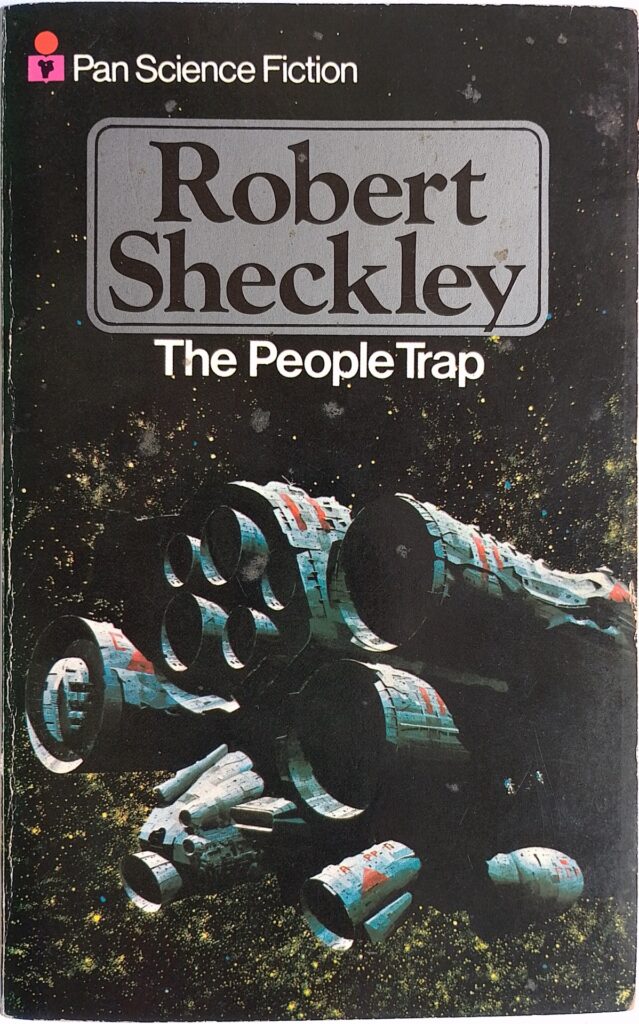First published 1968. Pan, paperback, 1977, pp 222, c.75,000 words.
This is a collection of fourteen short stories, loosely connected by the need for the protagonist(s) to escape from a bad situation. Some are set on a future Earth, but many are set on alien planets being visited by humans, often for the first time. The full title of this collection is The People Trap and other pitfalls, snares, devices and delusions, as well as two sniggles and a contrivance which signals the comic and satiric nature of the stories.
The People Trap is the title of the first story in this collection and concerns a hugely overcrowded New York. This is almost the same world as that of J.G. Ballard’s Billennium, included in Best S|F Six (1966), and was a common theme in 1960s science fiction. An everyman decides to enter a race to win an acre of land for himself and his family: a means of escape from his one-bedroom apartment that he shares with his wife, two children and a number of other relatives. It is typical in style of these stories where ingenuity might prevail over muscle. It also contains some casually horrific elements, which also appear in other stories. The second story is centred around a horrific premiss.
The third story, Shall We Have a Little Talk?, majors on another theme that reoccurs: that of language and linguistics, which is treated both as a plot device and for its comic potential. Psychology also majors as a driver of plot, both here and in others in this collection, as was also common in stories of the 1960s. The original Avengers TV serial often had episodes around manipulation of people through psychological means.
Sheckley doesn’t feel bound by currently accepted physical laws. Communications across stellar distances can happen instantaneously, and a rescue ship arrive in a matter of days, as happens in The Odour of Thought. Occasionally his inventiveness pre-figures something that later has become a reality, such as the device in The Necessary Thing which pre-figures 3-D printing. A rather similar device appears in episodes of Star Trek as the source of food. He also might be seen as prefiguring the multiverse theory [p179]. However, the future here is often reminiscent of the ‘60s: most people smoke (including aliens), typewriters are commonplace, and telephone books are still in use.
Hubris and get-rich-quick schemes abound, but the stories have conventional morality, and so these are Bad Things. There are some simple lessons in business here too: always know your customer before setting up in business is the lesson from The Laxian Key.
In some ways these are simple moral fables. They are all entertainingly and well written in a light-hearted key, with just an occasional edge of nastiness. One or two seem to run out of ideas partway through, but mostly this is an inventive and witty collection, deeply embedded in its period.
© William John Graham, September 2022

